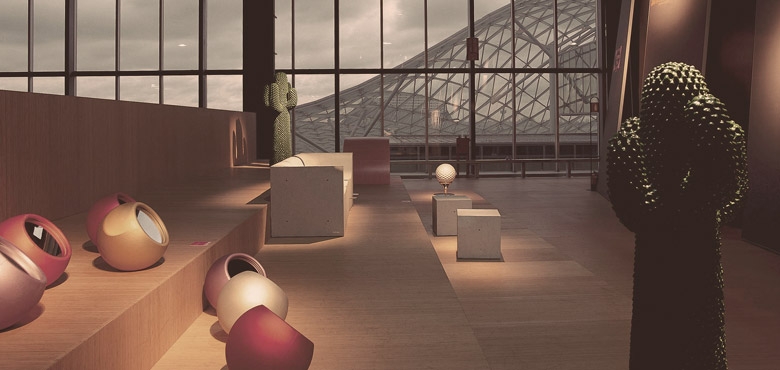
21 Dec Gufram: a Domestic – Crazy – Landscape
Starting from the Sixties, in the wake of the American pop art of Andy Warhol, Roy Lichtenstein, Claes Oldenburg, Richard Hamilton, and of New Dada by Jasper Johns, a company that, with the support of the architects of Studio Sessanta5, immediately established itself poses in a disruptive way as a “pioneer of industrial anti-design”.
Over the years he has made a real aesthetic revolution. It proposes objects of important dimensions, in soft polyurethane, which invite people to transform themselves into children and to want to experiment, in addition to the dimension of the practice of use, that of imagination, touch, sensory experience: sitting on a gigantic mouth dyed with red, hanging one’s jacket on a cactus, lying on a lawn of green, are experiences that only GUFRAM has been able to give.
That of GUFRAM is also a great history of made in Italy. The name derives from “Gugliermetto-fratelli-mobile” a family-run furniture company located in Grosso, not far from Turin, which had already chosen to break with the past in the 1950s, creating modern furnishings, characterized by research of new shapes, bold color combinations, experimentation with innovative materials. From the mid-1960s the designer Giuseppe Raimondi became the artistic director, who signed the company’s first products and prototypes for the company, shortly presented at the XIV Triennale di Milano, which met with considerable success with the public and the press. When, in 1972, the exhibition dedicated to Italian design entitled “Italy: The New Domestic Landascape” was organized at MOMA, the Gufram products, characterized by the spirit of radical design and counter-current experiments linked to aesthetic, technological and material research, they impose themselves internationally. Shortly thereafter they will be present in the collections of the most important European and American museums. In 2009 the brand, already owned by Poltrona Frau, passed to the management of Cassina, and two years later it was bought by a Piedmontese company based in Barolo. Today Charley Vezza, creative orchestrator, owner and artistic soul of GUFRAM, says: “Our objects in terms of cost, material and idea are destined to last forever. The concept of disposable is the furthest away from the way we conceive and manufacture our products: we want to help combat exaggerated consumerism, satisfying our customers with long-lasting valuables. “


